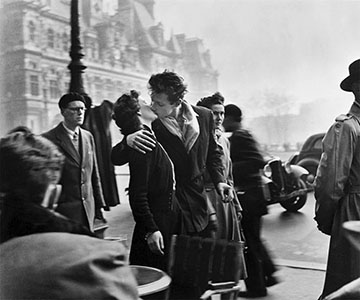![]()
After decades of studying the classic works of photography, I’ve determined there is a historic and philosophical bifurcation in the works created. For convenience, I classify all works as falling into one of two camps, and the group I’m personally drawn to — and one that I find most applicable in discussing current photographic creativity — is what I call “neo-modernism.”
There are a few simple attributes to images that are “neo-modernist”. At a practical level, it is creative photography regular people can do walking around with their phones. The key distinction of the neomodern image is that it is true, unaltered “seeing,” and this is separate from images that are in part, or in whole, fabricated in post-production, directed in production, or conceptualized in pre-production. Stieglitz used the term “pure seeing” as he was defining modernism, and it continues to apply here.
Photojournalism is by its nature neo-modern—it has ethics involved that prohibit the photographer from constructing the scene or adjusting the moment—and the great photojournalists (say, from Magnum, like Cartier-Bresson, Erwitt, and Salgado) I would suggest were all practitioners of neo-modernism (even if they’d never use the term), which is in part what makes their work so beautiful and lasting.
They moved beyond the journalistic to visual poetry. It’s the poetry that is “neo-modern.” Some of those mid-century street photographers, like Doisneau, would often stage their scenes (“The Kiss” among them), so while their images are visually poetic and compelling in many ways, they miss this journalistic ethic that neo-modernism demands.

It is the application of those journalistic and poetic principles to everyday picture taking that is the foundation of neo-modernism, and is useful when describing photography to new generations.
All of these attributes represent forced constraints, and are creative objectives; any given image might be more in some way and less in another. Every photo is an attempt at balancing all these forces. The struggle is personal, no one is judging. Neo-modernist photos are a true poetic form, not better than any other form, but a practice, with the following tenets:
Note: The images below can easily be replaced with classical works by the masters, but for copyright purposes, I am illustrating this with my personal photography.
Pure Seeing
![]()
Like 20th century modernism, neo-modernism is about the act of catching a real moment, of real things. Images are discovered and caught, not montaged together in software. They present the ephemeral or overlooked, they see the commonplace in a new way. They are unset-up, undirected, completely in vivo.
Formally, but Naturally, Composed
![]()
Like a painting, every element of the image is purposeful, but not contrived. They are harmonious in their spontaneous placements. They hold a rhythm of discovery that presents an experience of delight. They embrace the nature of “the decisive moment.”
Modest
![]()
The images are unpretentious; they don’t shout “look at me!” they speak their truth by allusion, metaphor, somewhat veiled whispers. Whether beautiful or shocking, they speak to it in hushed tones. They take a moment, but just a moment, to grok. Not too obvious, but not too cryptic.
Simple
![]()
They are sculpted by removing the extraneous, the distracting. This could mean they are monochromatic, but not necessarily. They have a sense of clarity and elegance. There is not much visual noise.
True
![]()
Whether an inner or external truth, they speak to something that is real and personal in the world, a feeling, a moment, something intimate, maybe something known and forgotten.
Moment, More Than Object
![]()
They are very much about time—they couldn’t have been taken by another person at another moment; they embrace the essential nature of a camera to reveal the fleeting.
Without Commercial Intent
![]()
Photos taken for the love of photography, not for a client or the public.
While I give the term “neo-modernism” to this style, I don’t have a term for the alternative approach to photographic art — mainly the work that is purposely assembled by the photographer, either by directing a model or setting up a scene or experimenting with artificial lighting or adding/removing elements in Photoshop and so on. There is so much work I love that is in this style—from Uelsmann and Taylor and the masters of collage to Irving Penn and a million other studio artists. I am attracted to this sort of storytelling, but I make a distinction between it and the neo-modern approach.
By creating and noticing this distinction, I find it’s easier to discuss and teach photographic creativity and I propose it is a useful semantic term for an entire body of work—both in the past and today.
About the author: Michael Rubin, formerly of Lucasfilm, Netflix and Adobe, is a photographer and host of the podcast “Everyday Photography, Every Day.” The opinions expressed in this article are solely those of the author. To see more from Rubin, visit Neomodern or give him a follow on Instagram. This article was also published here.
Image credits: All images copyright © 2021 MH Rubin
